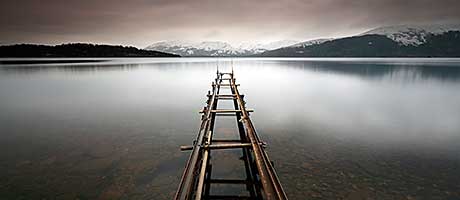
Scotland is making the most of its assets as it continues the drive to build a world-class renewables industry says Niall Stuart
WE ARE undoubtedly an energy-rich nation used to harnessing our natural assets to generate energy and economic opportunity. Renewables is sometimes seen as the newcomer to the energy mix but we’ve been around for more than 100 years thanks to the hydropower sector; that’s almost twice as old as North Sea oil and gas exploration. Hydro continues to produce a huge proportion of our renewable electricity output (38%) along with onshore wind (around half) while offshore wind and wave and tidal are waiting in the wings to make their mark.

We have built a sector that supports thousands of jobs, is creating opportunities for young apprentices, is providing billions of pounds of investment into the Scottish economy during the toughest of economic times and is helping tackle the greatest threat to our environment – climate change. Just ask yourself: what other industry in Scotland can create jobs on the scale of renewables while meeting those two terrific challenges?
But it’s the next chapter in our story which is really exciting people. Offshore wind has the potential to be a 360 degree sector – from research and demonstration, to assembly and manufacturing of offshore wind turbines, to sharing expertise throughout deployment, and finally to operations and maintenance in years to come – Scotland can and should be the global heartland of it all. Despite no planning consents having been granted for large scale offshore wind projects developers have already invested £164.5m through research and site demonstration activity, which just shows the level of commitment that’s out there from investors. It’s by no means an exaggeration to say that offshore wind could be a game changer for economies around our coastline, creating a new future for long-declining marine engineering skills and businesses.
The drive towards offshore wind has come for a number of reasons. The obvious ones are that we have the best recipe for success; abundance of natural resource, rich heritage in offshore energy from our oil and gas industry which also brings a quality of expertise ready to diversify into this sector and the political will to make it happen. But the biggest reason is we are intent on making sure we don’t repeat the same mistakes made in onshore wind.
In the early nineties the UK tried to position itself as a destination for onshore wind turbine manufacturing but we couldn’t guarantee the level of orders that companies wanted. In the end it was Denmark and Germany who won the contracts and we lost the race. We can’t afford to make the same mistake twice and that’s why there is such a feverish commitment to making Scotland the focal point of offshore wind.
‘It’s no exaggeration to say that offshore wind could be a game changer for economies around our coastline’
Learning our lessons, proving our worth and combating a heady mix of myths that surround the value and capabilities of the renewable energy is something we have come to recognise as being part and parcel of a new industry growing up. Thankfully, in a relatively short period of time, we have been able to deliver real results.
Looking ahead, the next 12 months will be a phenomenally challenging time. We have to manoeuvre our way through one of the most fundamental changes to the electricity market with the progression of the Energy Bill through UK Parliament, the issue of independence has meant big questions over how much of a risk or opportunity constitutional reform is, and how will we move towards and beyond the 2020 renewable energy targets?
These are some of the most crucial issues we have to face and will be discussing at our annual conference in Edinburgh on March 18 and 19. Ed Davey, UK secretary of state for energy and climate change, will give a keynote speech to leading figures from the industry keen to get a clearer understanding of how the government will decarbonise our electricity mix, how charges to connect to the grid can be kept to a minimum for those projects on our islands, and prove that the Coalition is in agreement over plans to be ‘the greenest government’ as well as provide a strong direction of travel for this industry.
Having a strong political will goes hand in hand with a strong public will to support the continued development of renewables as part of our energy mix. On the whole, public opinion has been positive towards renewables for a number of years and we believe that as the fruits of the industry are seen by individuals, homeowners and businesses that support will continue to stay strong.
[hr_dotted]
DATE FOR YOUR DIARY
Scottish Renewables’ Annual Conference & Exhibition, sponsored by RWE npower renewables, will be held at the Edinburgh International Conference Centre on March 18 and 19.
Details at:
www.scottishrenewables.com







